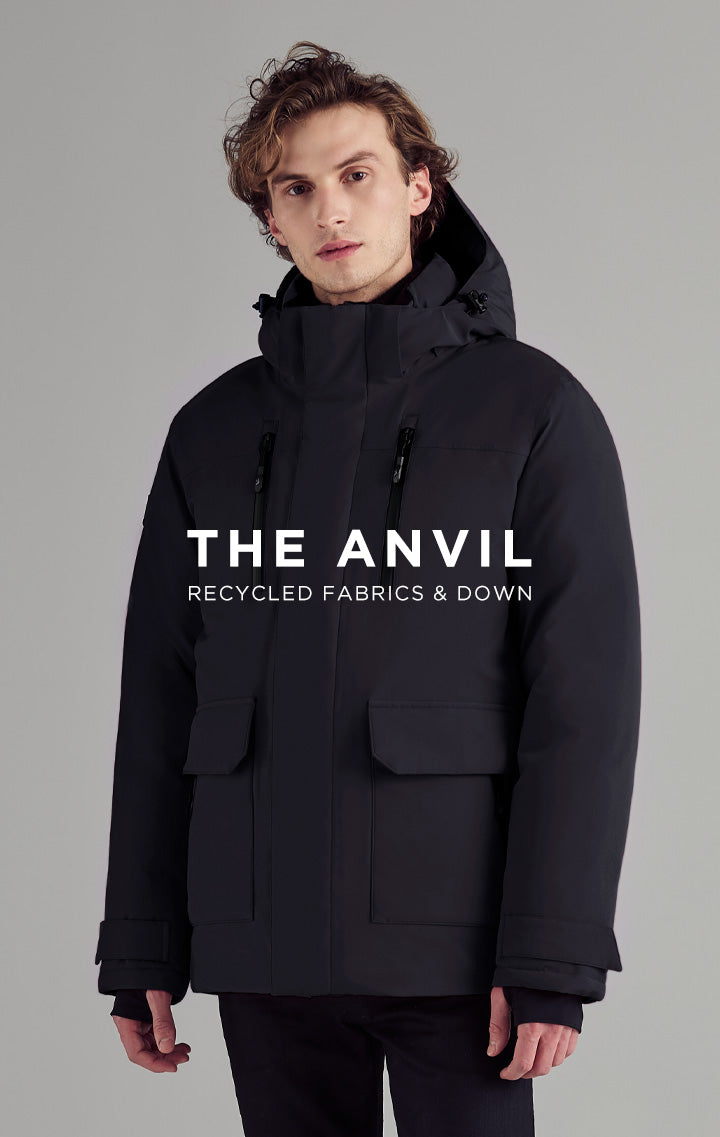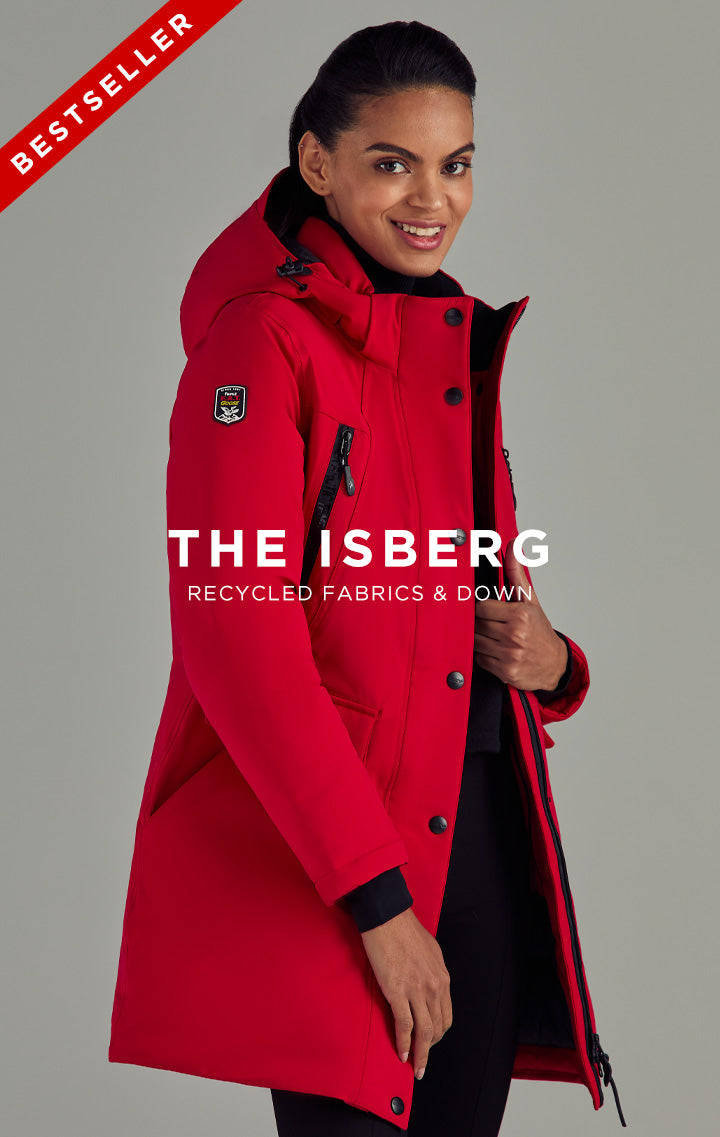This post was created by Triple F.A.T. Goose, an outerwear brand that Travel and Leisure magazine named as a top pick and said, "This is the best goose down winter coat I’ve ever worn" when describing Triple F.A.T. Goose down coats.
When it comes to buying a warm jacket for use in cold temperatures, there has been a long-standing debate over which type of insulation to choose. Do you buy a jacket that uses down as an insulator, or go with one that offers a synthetic substitute instead? Both options have their merits of course, but deciding which one is best for you is now more challenging than it has ever been before. That’s because the lines that once clearly defined the down vs. synthetic standoff have blurred in recent years, with both sides inching closer to one another in terms of performance and features.
With that in mind, let’s take a look at what defines these two categories of insulation and what makes them particularly well suited for keeping us warm in the coldest of conditions.
What is Down?
Most people think that down is made from the feathers of birds, but that isn’t actually the case. While it is true that down does come from birds—more specifically waterfowl such as geese or ducks—the material itself is actually a very light, fluffy plumage that is found underneath the feathers. For the birds that produce down, this material serves as a protective layer from the cold, shielding them from frigid temperatures. In other words, even in the wild down serves as an insulator.
Down is routinely used not only in jackets, but also in sleeping bags, pillows, quilts, comforters, and other products too. While in production, down naturally forms into clusters that are made up of thousands of interconnected fibers that cling tightly to one another. Those clusters have the ability to trap pockets of warm air, while still managing to remain breathable at the same time. Those properties are what make it such a popular choice as an insulator on consumer products.
Different Types of Down
While there are a number of different bird species that produce the material, the vast majority of the down that is used in jackets comes from either geese or ducks. There are some similarities between the two, but there are a few differences that are worth noting as well.
Goose Down
Because geese are larger than ducks and come from colder climates, you would think that most of the down used in jackets would come from that species of bird. But as it turns out, the vast majority of down that is produced is actually the byproduct of the food industry. Since geese are eaten in much smaller quantities as compared to ducks, there is less goose down harvested, making it a more scarce resource.
Additionally, goose plumage tends to be larger and has a higher fill power, which is an oversimplified way of saying it is warmer too. This makes it particularly well suited for cold weather parkas, mountaineering suits, arctic sleeping bags, and other equipment. All of these qualities also mean that goose down tends to command a higher price tag, which is usually reflected in the cost of the products.
Our Berkshire Jacket and Chenega II Parka are examples of jackets that use goose down as an insulator.
Duck Down
Because it is more readily available, duck down has become the de facto standard in terms of down insulation used in jackets, sleeping bags, quilts, and other products. It offers many of the same qualities as goose down, although due to the smaller size of the plumage, it doesn’t perform on quite the same level. Still, duck down is warm, comfortable, and affordable, making it an excellent alternative.
The Logan Jacket and Walden Vest are two of our best selling products that feature duck down as an insulator.
What is Fill Power?
When shopping for a down jacket you’ll typically see a number on the garment’s tag that indicates its “fill power.” Usually, that number will be somewhere between 600 and 900 depending on the brand, style, price, and the intended use of the product. A consumer-oriented down jacket intended for use around town is more likely to use 600 fill down, while a mountaineering jacket will probably opt for a higher fill power instead.
This number is an indication of the relative quality of the down, with higher numbers being better. In more technical terms, the fill power is a measure of how many cubic inches of loft that one ounce of the down produces. A higher number is an indicator of increased loft, which translates to improved efficiency when it comes to serving as an insulator. Thus, a jacket with an 800 fill power rating uses down that should manage and retain heat better than one that uses 600 fill power down instead.
That said, the fill power rating is not a reliable indicator of how warm a jacket will be on its own. There are a wide variety of other factors to be taken into consideration when determining warmth. We'll get to those below.
Learn more about Triple F.A.T. Goose, a brand with a 35 year history that has been featured in Outside, Esquire, Vogue, Elle, Men's Journal, Cosmopolitan, Robb Report, and more. All Triple F.A.T. Goose coats have a fill power rating of 675 and up. Shop the collection.
SHOP TRIPLE F.A.T. GOOSE
Other Factors to Consider
Fill power ratings aren’t the only thing to consider when it comes to determining the quality of the down used in a jacket. In addition to finding a fill power number, you may also find a down-to-feather ratio on the jacket’s tag as well. This is what is known as the “fill ratio” and it is used to express the percentage of down to feathers that are used in the jacket.
Keeping in mind that down is the insulator and feathers are mostly used as fillers, the higher the down-to-feather ratio is, the better the coat will perform. We recommend a minimum of an 80/20 fill ratio. Not all manufacturers list the fill ratio for their jackets however, so this information may not always be available.
Additionally, you may also want to look for the “fill weight” of the down too. This is a measurement of just how much down is used in a jacket and it is generally expressed in ounces. Once again, higher numbers are better here, as having 8 ounces of 700 fill power down in a jacket is quite different than having 12 ounces of that same type of down. It is even more difficult to find manufacturers that share this number, so you may have a hard time determining exactly what the fill weight of a jacket is.
To better understand the importance of fill power, fill weight, and fill ratio, check out our article on the subject here.
What is Synthetic Insulation?
As its name implies, synthetic insulations are ones that don’t occur naturally, but are instead manmade. These materials have been specifically crafted to provide a thin, lightweight, alternative to down that addresses some of the deficiencies that come with using goose or duck plumage. And since they are made in a lab, synthetic insulations can be fine-tuned, altered, and upgraded over time to improve performance.
Most synthetic insulations are made from polyester materials that consist of durable filaments that vary in size and length. These filaments have been woven together in a tight pattern that somewhat mimics the natural clusters that are found in down. This produces the same effect of trapping warm air inside, creating an efficient insulator as a result. In this way, even though these materials are manmade, they still mimic a trait that has evolved in nature.
Synthetic insulators tend to come in soft, flexible sheets, which gives designers a little more freedom with how they integrate the materials into a garment. These types of materials also tend to be very cost-effective and continue to perform well when wet too. These qualities directly address the biggest criticisms of down, which is why manufacturers sought manmade solutions in the first place.
Types of Synthetic Insulation
There are numerous types of synthetic insulation on the market, each with a slightly different approach to how the material is produced. Some of the top brands include PrimaLoft, Polartec, and Thinsulate. Some of the larger apparel companies even have their own proprietary synthetic insulations as they look to strike a balance between price and performance.
One of the challenges that come with using synthetic insulation is that there is no clear-cut standard for measuring how well they perform. Unlike down, which has fill power and fill weight ratings, there is no true industry standard when it comes to synthetic alternatives. That said, you’ll often see a “grams per square-meter rating” provided as an indicator of their warmth-to-weight ratios. While this can be a helpful indicator of performance, the numbers used in that rating can mean different things to different manufacturers.
Down vs. Synthetic Insulation
Now that we have a more complete overview of what constitutes both down and synthetic insulators, the question remains—which one is better? As we already mentioned, both types of materials have their pros and cons, although the differences between them have somewhat diminished in recent years.
As an insulator, down remains the clear winner in terms of warmth-to-weight ratios. It is lighter, more compressible, and generally warmer than any synthetic alternative, which makes it the best overall choice if your goal is to stay consistently warmer in cold temperatures. It also tends to be much more durable too, with down jackets and sleeping bags outlasting their synthetic counterparts by a significant margin.
On the other hand, the major drawback of down has always been its performance in wet weather or damp conditions. That’s because when down gets wet it loses its loft, which means it also no longer functions as a good insulator. When this occurs, down loses most of the advantages that it has over its manmade competition. In fact, most synthetic insulators were specifically developed to overcome this issue, which is why they tend to continue to perform very well even in extremely wet conditions.
When you factor in the less expensive price tag, improved breathability, and their hypoallergenic properties, it would be easy to come to the conclusion that synthetic insulators are the best all-around option. However, improvements in waterproof fabrics and durable water-resistant (DWR) treatments have helped down insulation to close the gap when it comes to performance in damp environments. The introduction of hydrophobic down, which essentially makes the material water-resistant, has been a real game-changer too, allowing goose and duck plumage to maintain its loft and insulating properties in just about any conditions.
Down has another distinct advantage over manmade insulators that is often overlooked in comparisons such as this one. Since down is a naturally-occurring material, it is also fully biodegradable. The polyester-based synthetic options aren’t especially eco-friendly in this regard, literally taking decades to completely decompose. Considering those same materials are also less durable as well, more synthetics end up in the landfill. That isn’t exactly good for the long-term health of the planet.
Deciding between a down jacket and a synthetic one often comes down to the individual garments you are choosing from. All things being equal, the down jacket is probably the warmer, lighter, more compressible, and durable of the two. If it also happens to have a DWR coating, hydrophobic down fill, or water-resistant fabrics, it will also likely perform just as well as the synthetic model in wet conditions. That said, if staying dry is your primary concern, then a synthetic option may remain the better choice. There is a high likelihood that it might even cost less too.
In the end, you’re getting a high-quality jacket either way, making your outdoor adventures much warmer and more enjoyable in the process.





